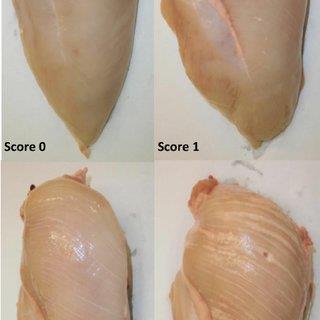 Dr. Sandra G. Velleman of Ohio State University recently presented the final report on Project #710 funded by USPOULTRY Foundation. The report entitled Early Post-Hatch Nutritional Strategies to Reduce the Incidence and Severity of Wooden Breast and Inflammatory Myopathies, suggested that early nutritional intervention applying dietary supplementation with Vitamin E and ALA, an Omega-3 fatty acid influenced gene expression, favoring an improvement in breast muscle microanatomy. Supplementation with Vitamin E was not associated with any significant improvement in body weight or yield but reduced the severity of wooden breast syndrome. Supplementation with Vitamin E reduced shear force values in the pectoralis major muscle.
Dr. Sandra G. Velleman of Ohio State University recently presented the final report on Project #710 funded by USPOULTRY Foundation. The report entitled Early Post-Hatch Nutritional Strategies to Reduce the Incidence and Severity of Wooden Breast and Inflammatory Myopathies, suggested that early nutritional intervention applying dietary supplementation with Vitamin E and ALA, an Omega-3 fatty acid influenced gene expression, favoring an improvement in breast muscle microanatomy. Supplementation with Vitamin E was not associated with any significant improvement in body weight or yield but reduced the severity of wooden breast syndrome. Supplementation with Vitamin E reduced shear force values in the pectoralis major muscle.
 Increasing Vitamin E in the starter diet was beneficial, but there was no effect from added Vitamin E in the grower diet. Supplementation with Vitamin E increased the proportion of giant myofibers in pectoral muscle when included in the starter diet. Vitamin E supplementation in combination with Omega-3 fatty acid decreased the number of intraepithelial lymphocytes in the mucosa of the intestinal tract and increased villus height and crypt depth. These changes are indicators of optimal intestinal function.
Increasing Vitamin E in the starter diet was beneficial, but there was no effect from added Vitamin E in the grower diet. Supplementation with Vitamin E increased the proportion of giant myofibers in pectoral muscle when included in the starter diet. Vitamin E supplementation in combination with Omega-3 fatty acid decreased the number of intraepithelial lymphocytes in the mucosa of the intestinal tract and increased villus height and crypt depth. These changes are indicators of optimal intestinal function.
The study conducted at Ohio State provided an insight into the mechanisms associated with the pathogenesis of pectoral myopathy in high-yield broiler strains. If Vitamin E and ALA supplementation are financially beneficial, dietary modification of chick diets extending through three weeks of age may provide a means of suppressing myopathy. Over the long term however, resolution of the problem will depend on genetic selection guided by biomarkers.
It is possible that the marketing and financial drivers of high-yield birds may now be inappropriate if restoration of the food service segment of the broiler market is delayed or is even permanently reduced in volume. Some integrators have transitioned from heavy birds raised for cut-up to harvest weights for tray-pack presentations suitable for home cooking. This trend has been driven by COVID-related factors that may well persist for years since recovery of the U.S. economy is not expected before 2024.
|

Dr. Sandra Velleman,
Ohio State University
|
In reality primary breeders are obliged to make their selections of elite stock at least three years before their progeny is ultimately marketed. This requires both an understanding of market demand and the ability to select financially desirable traits to the exclusion of deleterious outcomes.
In retrospect we have seen this movie before. “Pushing the envelope” in the early 1970's confronted the broiler industry with tibial dyschondroplasia. During the late 1970's ascites syndrome emerged and right heart failure became a field problem in the 1980s. Short-term modalities were introduced to reduce the impact of these conditions. Within a few generations the defects were successively resolved by appropriate adjustment of selection programs, guided by knowledge from the disciplines of pathology and genetics.
The studies conducted by Dr. Velleman as supported by USPOULTRY help in understanding the molecular mechanisms leading to pectoral myopathy. This condition is accepted to be the outcome of intensive phenotypic selection for ‘high yield” strains that are financially beneficial for specific markets but at a given period of time. Knowledge concerning the causation of pectoral myopathy will help guide index selection at the elite level in male lines allowing integrators to benefit from high breast yield without the current need for downgrading and consumer rejection.
|